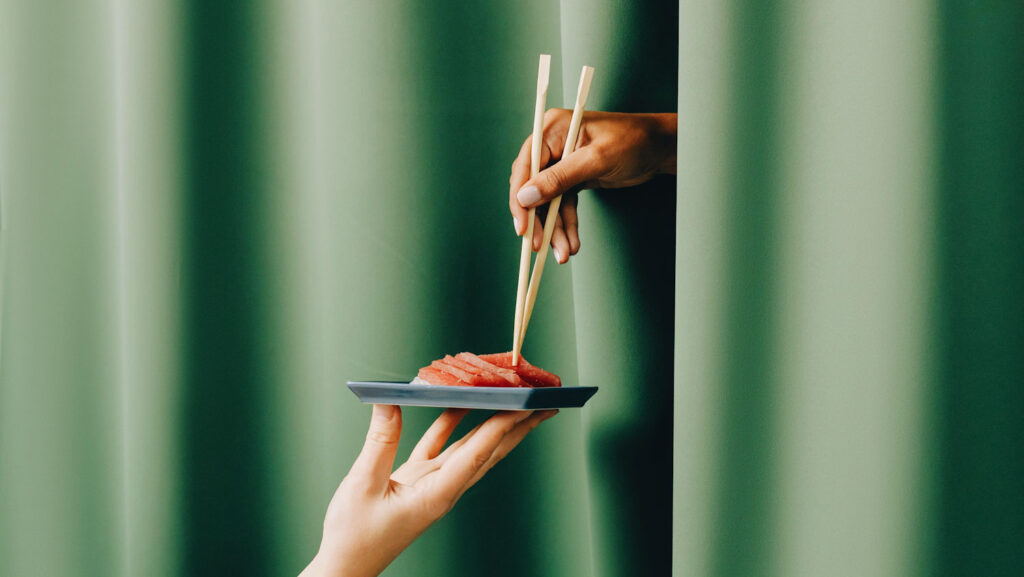Wildtype Foods is launching the world’s first cultured sushi tasting room.
The San Francisco-based food tech company opened its cultured seafood pilot plant last month and will introduce an in-house sushi bar by fall 2021.
A dedicated tasting room is one of the many ways in which Wildtype seeks to educate and inform the public about the broader benefits of cultured agriculture.
This type of cutting-edge protein production involves the growing of real meat from live animal cells without the breeding, keeping, and of animals central to traditional farming. Cultured meat is also referred to as cultivated, cell-based, or lab-grown protein. It’s not vegan, but it is inarguably more sustainable than animal agriculture.
“Wildtype wants to establish a high standard of education, trust, and transparency with our customers and the public,” said Wildtype co-founder Justin Kolbeck. “We want to show people where their food comes from and how it’s made.”
Founded five years ago, the company has focused specifically on sushi-grade cultivated salmon. Soon, its pilot plant will be capable of producing around 50,000 pounds of seafood per year, and at maximum capacity this will increase to more than 200,000 pounds.
What is a Cultured Sushi Tasting Room?
The plant’s tasting room, separated from the production facility by a transparent door, will teach visitors about the science behind the industry—and its potential to replace high-impact and unsustainable animal products. Wildtype has also built a cell-based seafood education center.
To make its cultured fish, Wildtype sources living fish cells from Pacific salmon before multiplying them in a “state-of-the-art” cultivation system. Workers then seed these into plant-based structures where they develop into the end result—salmon cuts indistinguishable from the wild-caught variety.
As the company itself says, cell-cultivated seafood can offer the exact same nutritional benefits, taste, and texture as its traditional counterparts, but without the associated health risks of mercury, microplastics, antibiotics, and other contaminants.

Can Cultured Seafood Help the Environment?
The world’s oceans are in trouble, and overexploitation of marine life is a huge problem. Popular seafood-animals, such as tuna, have had their populations ravaged.
According to a study published in the journal Fisheries Research, global tuna catches increased by more than 1000 percent in the preceding 60 years. The global salmon industry continues to decimate the environment, with fish farming, in particular, impacting biodiversity.
As with animal agriculture in general, cell-based seafood could provide a sustainable and futuristic alternative, and the industry is growing fast. Last year, Singapore approved the first-ever sale of lab-grown chicken, while Shiok Meat introduced cell-based lobster.
“Global demand for seafood is outpacing supply, so the status quo needs to change,” explained Wildtype co-founder Aryé Elfenbein, adding that Wildtype’s new plant combines innovation and education. “In addition to being designed to shorten innovation cycles and facilitate the scaling of food production, the facility will be a place where the public can learn about this fascinating new technology,” he said.
A recent study published by open access journal Foods revealed that 80 percent of American and British consumers would be open to cell-based meats when they hit the market. Of these, 40 percent are moderately likely to try it, and 40 percent are extremely likely.


